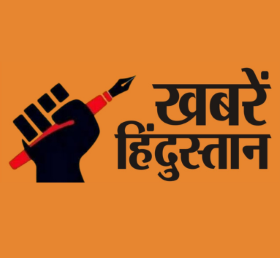In a potential game-changer for India’s middle class, the Union Government is reportedly considering income tax cuts for individuals earning up to ₹15 lakh annually. This proposal is likely to be unveiled in the upcoming Union Budget 2025, scheduled for February 1. The move aims to address the rising cost of living, boost consumption, and provide economic relief amid slowing growth.
Why Tax Cuts Are on the Table
Economic Slowdown
India’s economic growth has shown signs of fatigue, with second-quarter GDP figures highlighting sluggish demand. A reduction in income tax would increase disposable income, potentially revitalizing consumer spending.
Rising Inflation
Persistent inflation has pushed up living costs for middle-class households. Wage growth has not kept pace, intensifying the call for tax reforms to ease financial burdens.
Focus on Consumption-Driven Recovery
Experts believe boosting middle-class spending power is essential to stimulate demand in key sectors like FMCG and real estate, which are struggling due to subdued consumer confidence.
Proposed Changes in Income Tax Slabs
New Tax Regime (NTR)
The government may revise the tax slabs under the New Tax Regime (NTR) to offer better incentives for taxpayers. Current tax rates under NTR are:
- Income up to ₹3 lakh: No tax
- Income between ₹3-7 lakh: 5%
- Income between ₹7-10 lakh: 10%
- Income between ₹10-12 lakh: 15%
- Income between ₹12-15 lakh: 20%
- Income above ₹15 lakh: 30%
Old Tax Regime (OTR)
Under the legacy system, individuals can claim exemptions for investments in housing loans, insurance, and provident funds. The current OTR slabs are:
- Income up to ₹2.5 lakh: No tax
- Income between ₹2.5-5 lakh: 5%
- Income between ₹5-10 lakh: 20%
- Income above ₹10 lakh: 30%
Potential Adjustments
The government may increase the basic exemption limit for both regimes and reduce rates for middle-income brackets (₹5-15 lakh range). This would make the New Tax Regime more attractive, potentially encouraging a switch from the Old Regime.
Impact on the Middle Class
Increased Disposable Income
A reduced tax burden would leave more money in the hands of taxpayers, enabling them to cope with rising expenses.
Boost to Consumer Spending
Higher disposable income is expected to drive purchases in key sectors, spurring economic recovery during the slowdown.
Relief for Urban Households
City dwellers, who face steeper costs for housing and essentials, stand to benefit significantly from the proposed tax cuts.
Economic and Industry Reactions
Chief Economic Advisor’s View
Chief Economic Advisor V. Anantha Nageswaran recently highlighted the disparity between corporate profitability and worker income. He called for measures to balance growth, profitability, and worker wages, emphasizing the need for robust consumption.
FMCG Sector Concerns
Nestle India’s Managing Director Suresh Narayanan expressed concerns over the “shrinking middle class” and its impact on the FMCG sector. He noted that inflation has dampened volume growth, making tax reforms crucial.
Economists Advocate for Fiscal Flexibility
Many economists argue that the government should prioritize growth over fiscal consolidation. Offering relief to taxpayers could restore consumer confidence and support sustainable economic recovery.
Benefits of the Proposed Tax Reforms
- Reviving Consumption: Tax cuts would address subdued demand in sectors like housing, automobiles, and consumer goods.
- Supporting Urban Populations: Higher-income urban households, who are heavily taxed, would gain substantial relief.
- Simplifying Tax Compliance: Revising slabs and making the New Tax Regime more attractive could streamline tax compliance.
- Encouraging Savings and Investments: Increased disposable income may also boost savings and investments, benefiting the financial markets.
Challenges Ahead
While tax cuts are widely welcomed, they pose certain challenges:
- Revenue Deficit Risks: Reduced tax collections could widen fiscal deficits, necessitating careful planning to balance public spending.
- Switch to New Tax Regime: Taxpayers accustomed to exemptions under OTR may be hesitant to adopt NTR despite lower rates.
- Long-Term Growth Focus: Short-term relief must align with the government’s long-term goals of fiscal prudence and economic stability.
Conclusion
The government’s proposal to reduce income taxes in Budget 2025 could be a major relief for India’s middle class, addressing rising costs and boosting consumption. This reform, coupled with industry-friendly measures, may be pivotal in rejuvenating the economy. However, careful implementation and balancing fiscal health will be key to ensuring sustainable growth.





